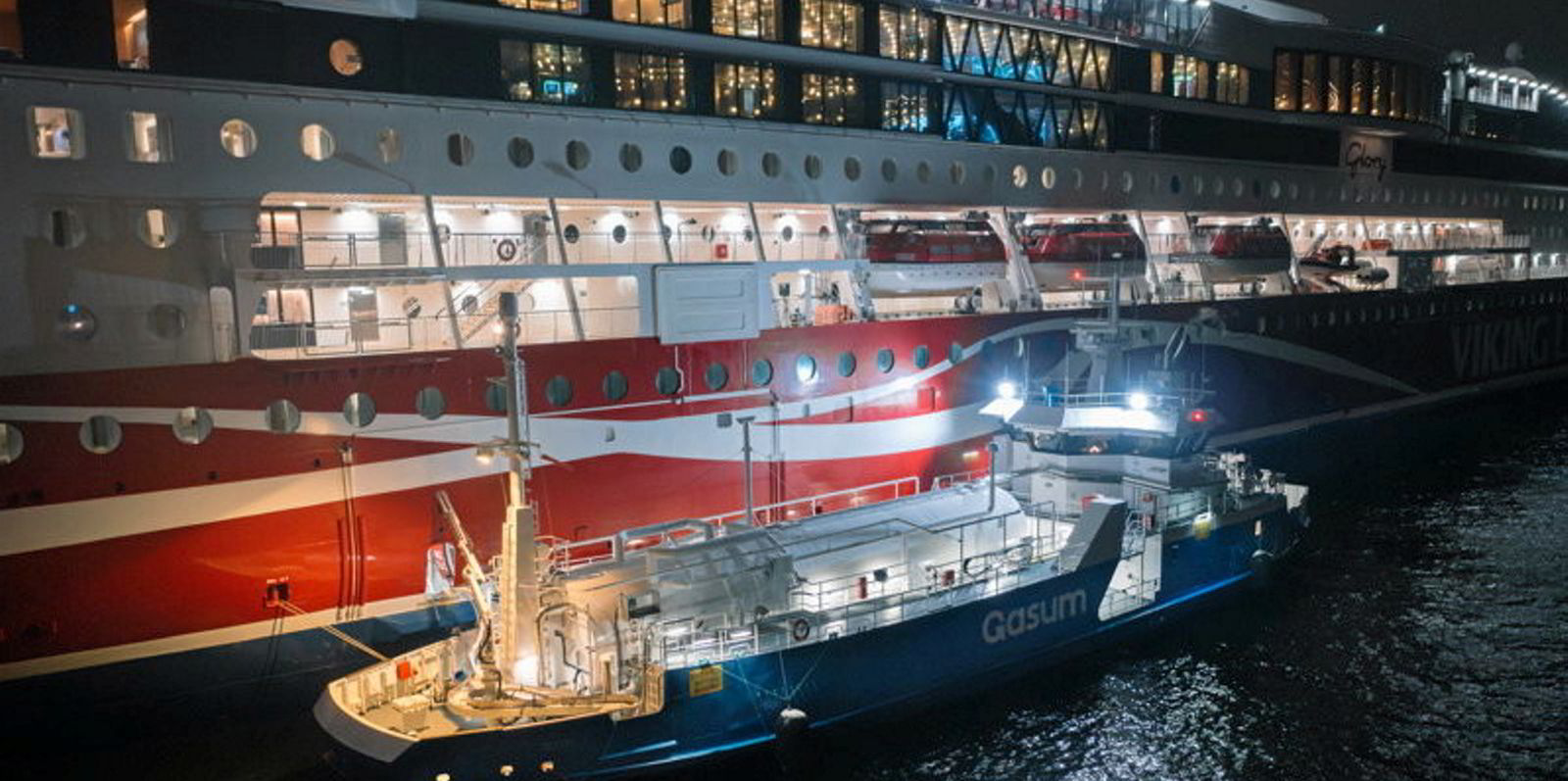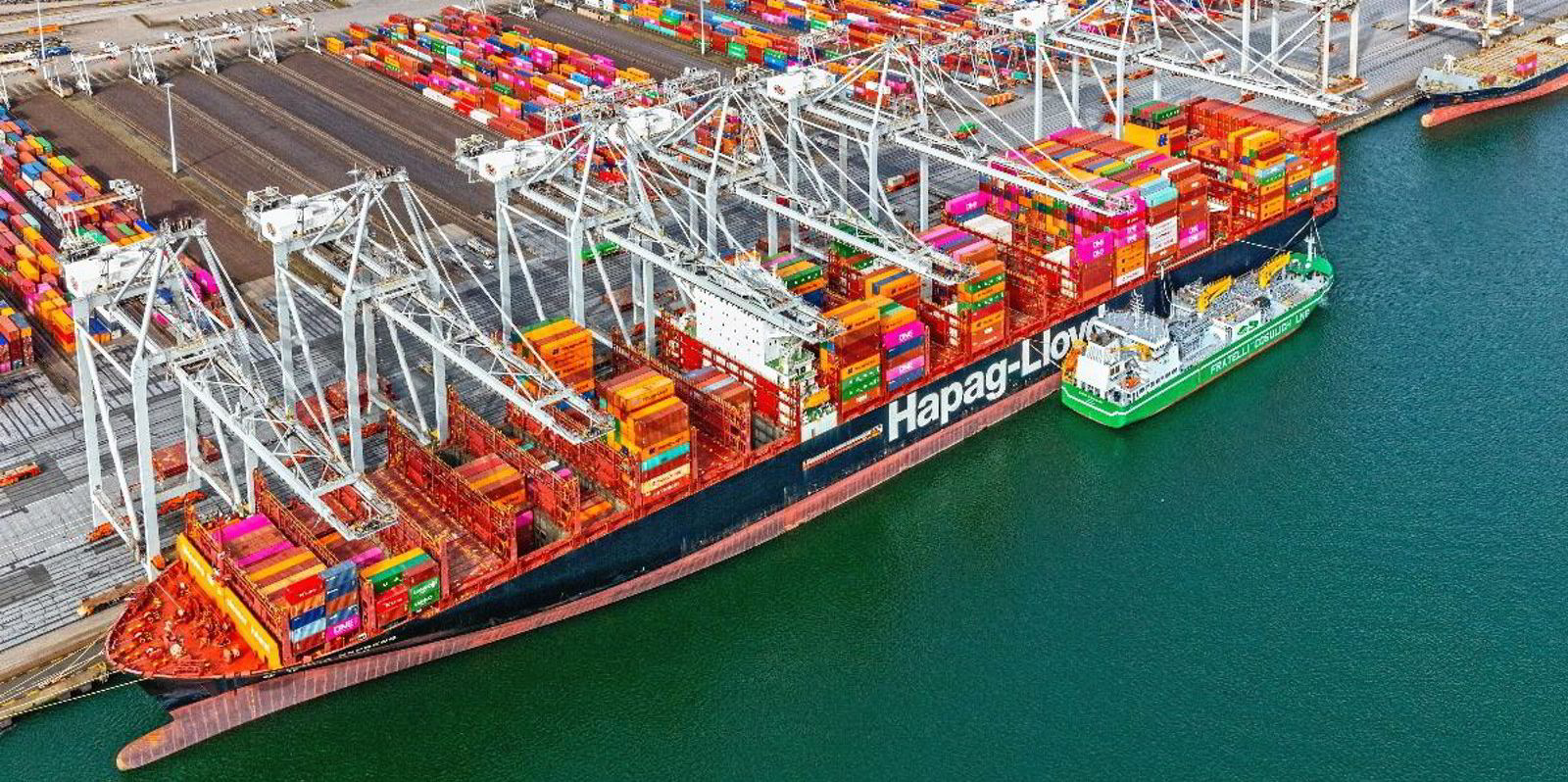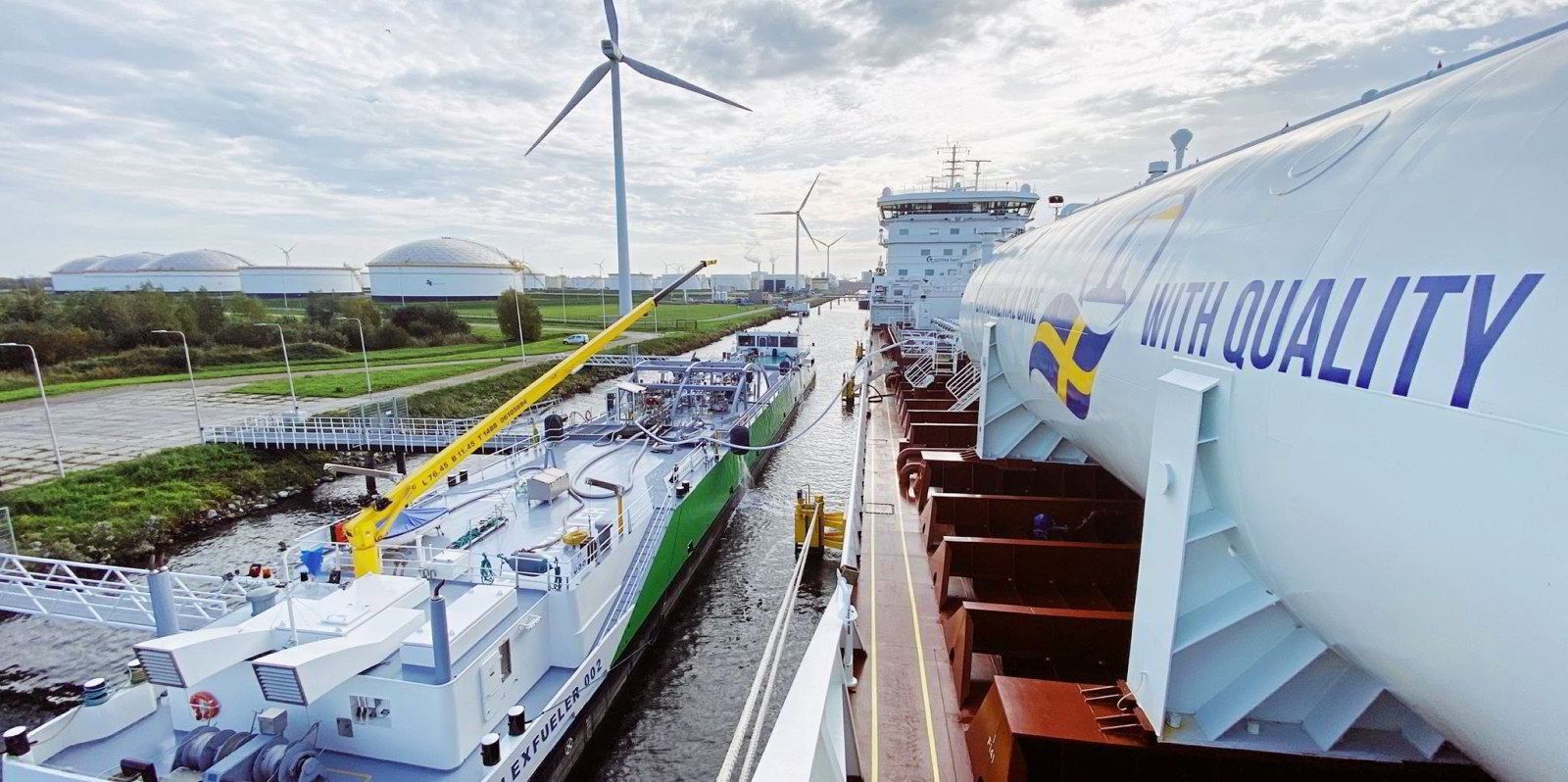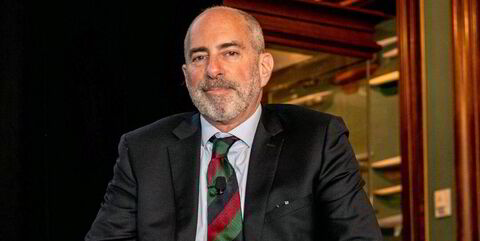Book to sail on one of cruise and ferry operator Viking Line’s two LNG dual-fuelled ropax vessels, which ply between Sweden and Finland, and there is an option to decarbonise the trip by paying the company extra to load some of its bunkers as bio-LNG or liquefied biogas (LBG).
Viking Line vice president and director of freight Harri Tamminen told TradeWinds that the company set out with a promise to passengers whereby paying for LBG would cut the greenhouse gas emissions for their trip by 90% compared with a journey where just LNG was used.
But Tamminen said the latest data for the 62,211-gt Viking Glory (built 2022) and 57,565-gt Viking Grace (built 2013) shows LBG has reduced these emissions by 95%.
Viking embarked on its LBG use in mid-2023, first offering it as an option for passengers in June and freight customers in October.
Passengers buy a surcharge per trip of around €5 ($5.40) — based on average fuel use per person — to add LBG to their voyage under what the two companies have dubbed “green shipping on demand”.
Freight customers pay between €200 and €300 per freight unit, which includes lorries or trucks ranging from 17 to 34 metres in length.
Viking collects the amount of LBG bought and, when it has a big enough batch, it orders the amount from Finnish supplier Gasum, which bunkers the volumes co-mingled with the LNG it supplies to fuel the vessels.
Gasum vice president of maritime Jacob Granqvist said that when shipping is often asking who will pay the decarbonisation bill, this offers a system to facilitate that. “The pressure is transferred from the shipping company to the cargo owners,” he said.

Granqvist said that in theory, Gasum could supply 100% of the bunkers required for Viking’s two vessels — between 20,000 and 30,000 tonnes per annum in total — as LBG if customer demand requested it. According to Viking’s sustainability report for 2023, the company consumed 27,197 tonnes of LNG in 2023 and 10 tonnes of LBG.
The vice president added that Gasum is now talking with other companies about similar initiatives.
Affording bio-LNG
On Viking, the additional cost of LBG, which is between two and three times the cost of LNG, might seem marginal for the passenger but it is a bigger bill to swallow for freight users.
Tamminen said that Viking’s freight customers are not the owners of the cargo they transport so it is taking time for the industrial and commercial clients to buy into cleaner transport.
He said it is important that the end users calculate this additional cost on a per tonne or piece basis as this way the surcharge is “minimal” and they can then account for this in their sustainability reporting.
Tamminen said the company is receiving a large number of calls from customers who want to understand more about the initiative.
They want to know where the LBG is sourced from, about the logistics chain and what kind of certification they can get that Viking has bunkered the LBG.
“We are getting a huge number of requests for these facts. Hopefully, it will lead to a lot of orders in the future.”
But he said for the time being the uptake from the freight side is very slow. He suspects the economic downturn in Europe may be one of the factors stopping freight customers from paying up to decarbonise their shipments. However, he believes they will eventually come on board with the initiative.
Real transport potential
“You have to have a huge interest before it comes down to real transport but we are closing in,” he said.
On the plus side, the vice president said some passengers are starting to use the “green shipping on demand” choice daily.
Tamminen said LBG is a new product for Viking and offers customers the chance to deepen their cooperation with the company. “That’s how we see it,” he added.
Viking sees its contribution as building the vessels to run on LNG and the infrastructure to bunker them. The two ships are supplied by Seagas in Stockholm.
Some observers feel the “LNG” tag in bio-LNG — a term initially used in the trucking market — is confusing the understanding of the product, which is not derived from natural gas.
For marine, the product is also being marketed as liquefied biomethane. “Liquefied biogas” is also used.
Biogas has traditionally been used locally to produce heat and electricity.
But many biogas plants are being upgraded and converted into biomethane plants so that the gas they produce can be fed into the grid.
There is also a debate about whether the fuel should be rebranded. Some players ask why other alternative fuels, such as methanol and ammonia, have simply been tagged with a “green” prefix.
“That’s what we have invested in,” Tamminen said. “We take on the cost of the infrastructure and we only charge for the extra cost of LBG.
“We have made huge steps in environmental issues since the beginning and this is one step towards something else,” he said. “It is not the end of the line. I would call it a bridge for the next generation fuels which are even more environmentally friendly than LBG.”
Tamminen said these will most likely be e-fuels but there is no timeline for them as yet and costs will need to come down for them to be used commercially.
Viking has no newbuildings on order but Tamminen said the next ones will have to be based on future fuels whether this will be some form of hybrid model or e-fuels.
“No one knows for the time being but we are looking into different possibilities,” he said.
- Bio-LNG is considered nearly carbon-neutral because it is produced from organic waste flows, such as organic household and industrial waste, manure and sewage sludge.
- Synthetic LNG or e-LNG is renewable when e-methane is produced using renewable electricity and CO2, either from the air or renewable biomass.
- Both are identical to fossil LNG but are considered renewable as their upstream CO2 inputs make them carbon neutral on a well-to-wake basis.






